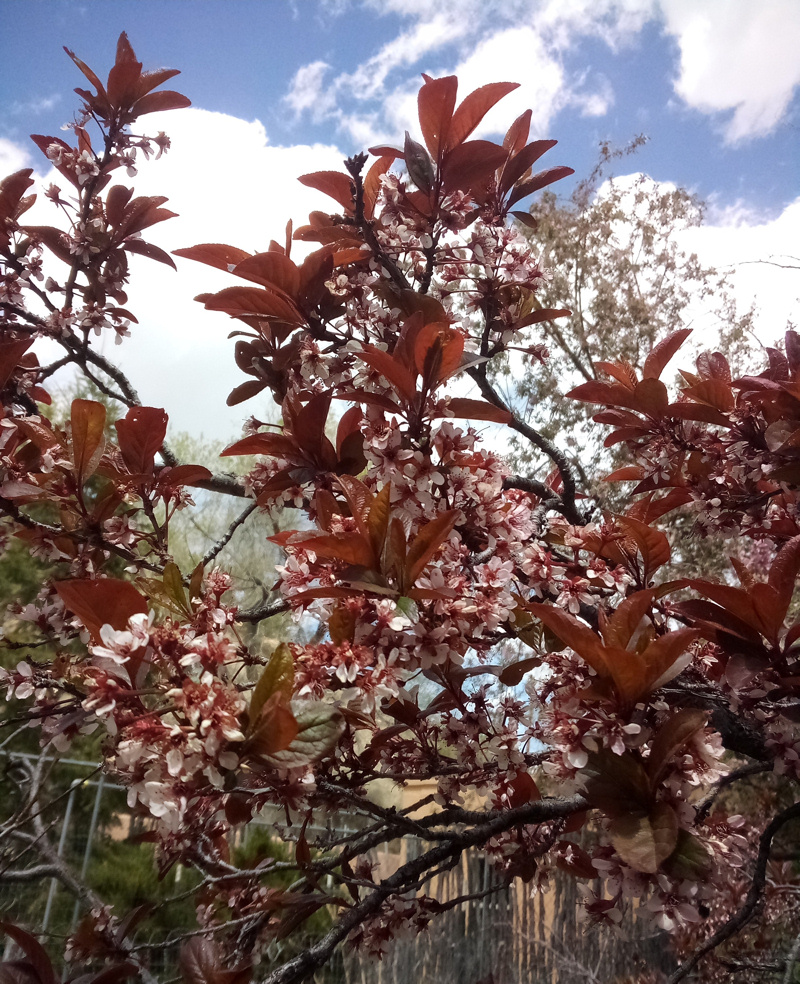When she talks about her apple tree loaded with fragrant blossoms this spring, master gardener Joelyn Pafford looks sad. Pafford, a retired Raton school teacher, keeps asking herself this question: where are the bees?
Indeed.
When I checked out our backyard plum tree, I found pretty pink blooms posing for their pollinating partners, like invitations to a party. The flowers were vacant.
Unless bees, wasps and other insects start showing up, my friend Joelyn may have no apples, and I may have no plums. Fruit tree flowers offer nectar to insects in exchange for the critters moving pollen from the male flower parts to the female.
Aside from possibly no fruit, I just miss these tiny creatures. Years ago, I stood mesmerized under my singing Granny Smith apple tree in Longmont, Colorado. The tree “sang” to me via a choir of hundreds (thousands?) of honey bees foraging and buzzing in the flowers.
Honey bees are non-native insects brought to North America by settlers eager to harvest honey and wax. We have beekeepers in the Raton area. There are also nearly 4,000 different native bees, including bumble bees, who handled pollinator chores long before the honey bees arrived.
Neither Joelyn nor I are seeing bees of either variety.
More and more people are aware of the critical role played by pollinators, which help produce much of our food. Meanwhile, scientists report that insect populations are shrinking worldwide—what some call the Insect Apocalypse.
“… insect surveys suggest that 40 percent or more of insect species may be under threat of extinction … due to habitat loss, increased use of chemical pesticides and fertilizers, and the changing climate,” writes entomologist Jason Cryan, head of the Utah Natural History Museum.
In the 1950s and 1960s, I sat in the backseat of our black Chevy as my Army officer father drove Mom and I to his next assignment. Like others of my generation, I remember bug-splattered windshields that required frequent cleaning stops. On my road trips now, the bug-windshield encounters are much fewer.
Also, missing insects are bad news for birds. Parent birds need to catch thousands of insects to feed their baby birds in the spring. Audubon cites reports that estimate it takes between 6,000 to 9,000 insect caterpillars to raise a brood of five chickadees.
I don’t know what’s happening locally. Are Raton-area beekeepers seeing a die-off? Did warmer weather cause trees to flower before native bugs could hatch out? Have drier conditions made it harder for insects to reproduce?
Meanwhile, here are a few suggestions. We can:
- plant drought-tolerant native plants that support native bees
- call Raton city hall and “opt out” of pesticide spraying to mitigate mosquitoes
- put out simple habitats for native, non-stinging bees like mason bees (i.e. open-ended tin cans with sticks—see patterns online)
While some of us dislike bugs, the truth is that if insects disappeared tomorrow, our lives would be hugely impacted. They are the bees’ knees!
Read more articles about caring for our Earth on Pat’s page – Earth Corner











